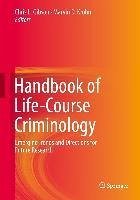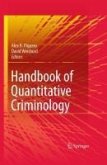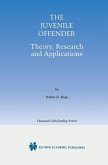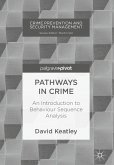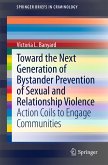The Handbook of Life-Course Criminology covers genetics and environment, child offenders and late bloomers, the impact of school and peers, lifelong and time-limited criminal careers, and qualitative and quantitative methodologies. This unique Handbook is further set apart by its dual coverage of the leading edge of current research and innovative directions for future work in the field. Pathways to crime have been a central concept of criminology from its inception. Accordingly, a lifespan approach to the field has replaced earlier biological and sociological perspectives with a more nuanced understanding of offender behavior and a wider lens of study. The contributions to this Handbook break down issues of criminal and antisocial behavior from early childhood to late adulthood, examining developmentally targeted prevention and intervention strategies and reviewing emerging trends in research. Among the topics:
-Childhood: physical aggression in childhood, pre- and peri-natal development, and environment. -Adolescence: the impact of schooling, unstructured time with peers, gang membership and peer networks. -Adulthood: Adult onset crime, unemployment in emerging adulthood, crime and adult outcomes. -Prevention and Intervention: community programs, lifetime intervention strategies, re-entry. "This Handbook should be required reading for all criminologists." David P. Farrington, Professor of Psychological Criminology, Cambridge University, Cambridge, UK
"...it lays out rich agendas for future research that should inspire the next generation of developmental criminologists." Daniel S. Nagin, Teresa and H. John Heinz III University Professor of Public Policy and Statistics, Carnegie Melon University, Pittsburgh, PA, USA
-Childhood: physical aggression in childhood, pre- and peri-natal development, and environment. -Adolescence: the impact of schooling, unstructured time with peers, gang membership and peer networks. -Adulthood: Adult onset crime, unemployment in emerging adulthood, crime and adult outcomes. -Prevention and Intervention: community programs, lifetime intervention strategies, re-entry. "This Handbook should be required reading for all criminologists." David P. Farrington, Professor of Psychological Criminology, Cambridge University, Cambridge, UK
"...it lays out rich agendas for future research that should inspire the next generation of developmental criminologists." Daniel S. Nagin, Teresa and H. John Heinz III University Professor of Public Policy and Statistics, Carnegie Melon University, Pittsburgh, PA, USA
Dieser Download kann aus rechtlichen Gründen nur mit Rechnungsadresse in A, B, BG, CY, CZ, D, DK, EW, E, FIN, F, GR, HR, H, IRL, I, LT, L, LR, M, NL, PL, P, R, S, SLO, SK ausgeliefert werden.
From the reviews:
"Gibson and Krohn have edited a very excellent and comprehensive volume bringing together original and relevant summaries on 'life-course development criminology.' ... Gibson and Krohn's work provides a very admirable summary of life-course criminology articles that identify social factors for understanding criminal conduct. Summing Up: Highly recommended. Upper-division undergraduates and above." (G. C. Leavitt, Choice, Vol. 50 (11), July, 2013)
"Gibson and Krohn have edited a very excellent and comprehensive volume bringing together original and relevant summaries on 'life-course development criminology.' ... Gibson and Krohn's work provides a very admirable summary of life-course criminology articles that identify social factors for understanding criminal conduct. Summing Up: Highly recommended. Upper-division undergraduates and above." (G. C. Leavitt, Choice, Vol. 50 (11), July, 2013)

